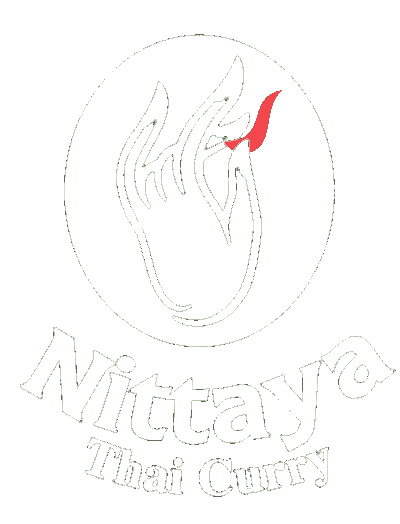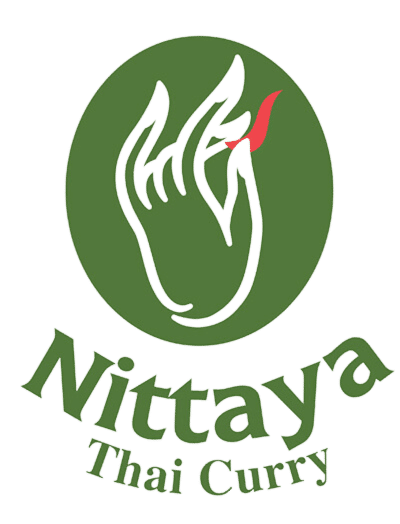Thai Curry Paste Story
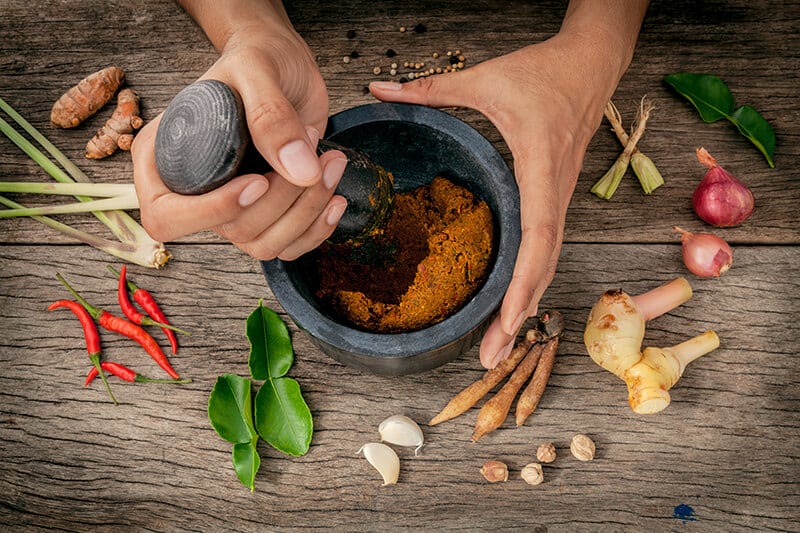
Table of Contents
The Evolution of Thai Curry
Many elements of Thai curry—like the use of spices and the concept of grinding spices and herbs into a paste—can be traced back to Indian culinary traditions. The word “curry” itself is thought to have evolved from the Tamil word ‘kari’, which was used to refer to a sauce for rice.
Indian curry, along with other elements of Indian culture and cuisine, made its way to Thailand and other parts of Southeast Asia primarily through historical trade routes, which can be traced back to at least the first century CE.
The fusion of Indian curry with Thai culinary practices didn’t happen overnight but was the result of ongoing exchange and synthesis over centuries. By the time the Portuguese and Spanish arrived in the 16th century, Thai cuisine had already been influenced by Indian spices and cooking methods, setting the stage for the development of what we recognise today as Thai curry.
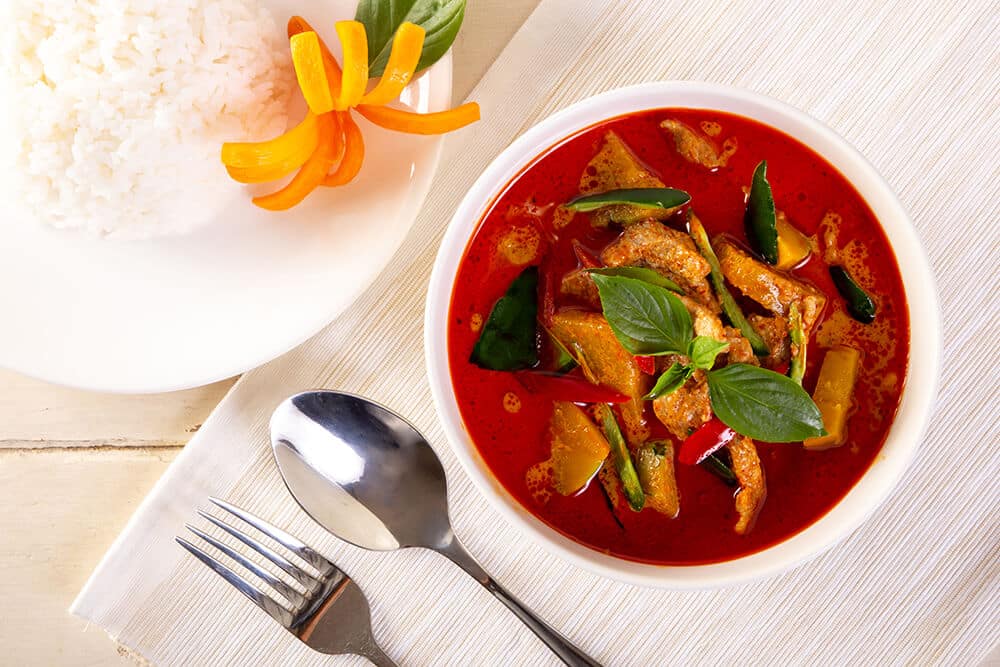
Chilli Paste (Nam Prik): The Fiery Heart of Thai Curry
Chilli paste, or ‘nam prik’ in Thai, is the fundamental flavour base that distinguishes Thai curries from other types of curry found across Asia. The blend of fresh, aromatic ingredients like lemongrass, galangal, and kaffir lime, coupled with the distinct flavour of shrimp paste, gives Thai curry its signature taste.
Several types of chilies can be used, each lending its unique heat and flavour profile. Bird’s eye chillies are used to make green curry paste, while red curry paste is made with dried red chillies.
Ingredients in Thai Curry Paste
- Chilli – helps reduce blood pressure. It also contains vitamin C, E, B1, B2 and B3.
- Basil – helps relieve symptoms of indigestion.
- Shallot – helps prevent and treat colds, fevers and coughs.
- Garlic – helps reduce cholesterol and prevent heart disease.
- Shrimp paste – contains calcium and vitamin A.
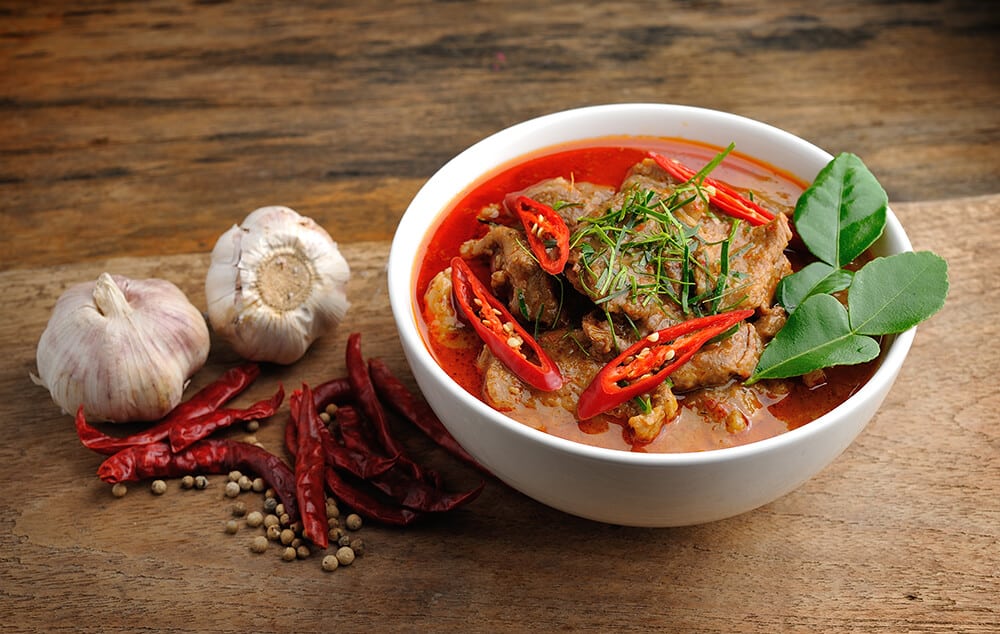
Did you know…?
- Panang curry is named after the island of Penang off the west coast of Malaysia. Although a Thai dish, it has its origins in the historical trade relationships and cultural exchanges between the regions.
- Massaman curry, another beloved Thai curry variant, can be traced back to Persian origins. The word “Massaman” is thought to derive from the word “Mussulman” which is an old term for Muslims. It is a fusion of Thai, Indian and Malaysian influences.
- Thai curry paste is not just for curries. It can also be used as a marinade for grilling meats, as a base for stir-fries, or even mixed into noodle dishes for an added flavour kick.
